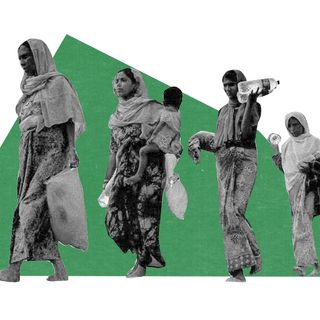
Closing the Global Gender Inequality Gap Will Take 135 Years, New Report Finds
In India, only 22.3% of women participate in the formal labor market, data shows.

The global pandemic has pushed back gender parity by almost a generation; it will now take an average of 135.6 years for women and men worldwide to achieve equality across a range of factors, a World Economic Forum (WEF) report concludes.
The WEF had last year pegged that it would take 99.5 years to achieve parity, but the Covid19 health crisis and resultant economic fallout re-opened cracks across sectors, which have impacted women more severely than men.
Titled “Global Gender Gap Report 2021,” the findings compile analysis and studies across 156 countries and gauge changes in gender parity in the one year since the pandemic struck. It measures equality across four dimensions: economic participation and opportunity, educational attainment, political empowerment, and health and survival. While there was mild progress across education and health indicators, the global trends around economic activity and political participation were concerning. Representation of women in politics, for instance, languishes the most: women represent only 26.1% of some 35,500 parliament seats and just 22.6% of more than 3,400 ministers worldwide.
South Asian countries occupied the latter half of the Gender Gap index. India, for instance, figured at the 140th position, recording a drop of 28 places since last year, meaning it has widened its gender inequality. It is also the third-worst performer in the South Asian region. “Progress has been too slow in the recent past, and this year has actually reversed,” the report notes. This decline is ascribed to the inadequate participation of women in politics; the share of women in parliament remains at 14.4%, and the number of women ministers in India notably halved from 2019 to 2021, registering a fall from 23.1% to 9.1%.
Related on The Swaddle:
UN Presents Framework for Mitigating Covid19’s Impact on Women
Unequal economic participation also impacted India’s decline. The economic gender gap, in particular, widened by 3% this year, putting India among the bottom 10 countries globally on this particular subindex. The report cites reasons such as a fall in women’s labor participation rates, increased workplace challenges, lack of involvement in professional and technical roles, and minimal representation of women in senior and managerial roles. Only 22.3% of women participate in the formal labor market, the report adds. The widening chasm is also reflected in the wage gap: Indian women’s estimated earned income is only one-fifth of men’s, the report noted. Globally, the economic gender gap is not expected to close until the year 2288.
During Covid19, more women undertook care responsibilities at home, which led many to drop out from the workforce. Moreover, women are primarily employed in consumer, retail, and hospitality industries, the report notes, the pandemic-related closure of which impacted their economic participation. Increased digitization in workplaces also factors in here, as roles that tend to employ women are shifting to more automation. “The pandemic is likely to have a scarring effect on future economic opportunities for women, risking inferior reemployment prospects and a persistent drop in income,” the report noted.
India also ranks the lowest across the indicator measuring health and survival, which tracks sex ratio at birth and life expectancy. This takes into account worrying data: one in four Indian women faces domestic violence in her lifetime, and rampant cases of gender-based sex-selective practices continue to skew the national sex ratio.
“The impact of the pandemic on women is still likely to be underestimated and isn’t fully seen in the data available so far,” Saadia Zahidi, managing director of the World Economic Forum, tells TIME.
Nordic countries like Iceland, Finland, and Norway topped the ranking of the countries closest to achieving gender parity. Infrastructural models from these countries can offer a learning window into addressing the disproportionate burden on women: offering more support to working families, policies that pay special heed to women workers and women-owned businesses could help, Zahidi notes.
The report recommends gender-positive recovery policies; these include — and aren’t limited to — equitable access to care leaves for men and women, devising ways to overcome gender-segregation in different occupations, and promoting re-skilling at different points in career to ensure men, and women, remain relevant in the future of work.
“There can be perhaps a tendency to think of gender equality as an afterthought, to think about the challenges associated with gender equality and the permanent scarring that may occur in our labor markets as something that we deal with later. …Our point of view here is that we must do the exact opposite. This is actually the moment to embed consciously and proactively gender equality into the recovery,” Zahidi says.
Saumya Kalia is an Associate Editor at The Swaddle. Her journalism and writing explore issues of social justice, digital sub-cultures, media ecosystem, literature, and memory as they cut across socio-cultural periods. You can reach her at @Saumya_Kalia.
Related


Rape Survivor Writes To CJI Alleging Sessions Judge Laughed at Her During Hearing
